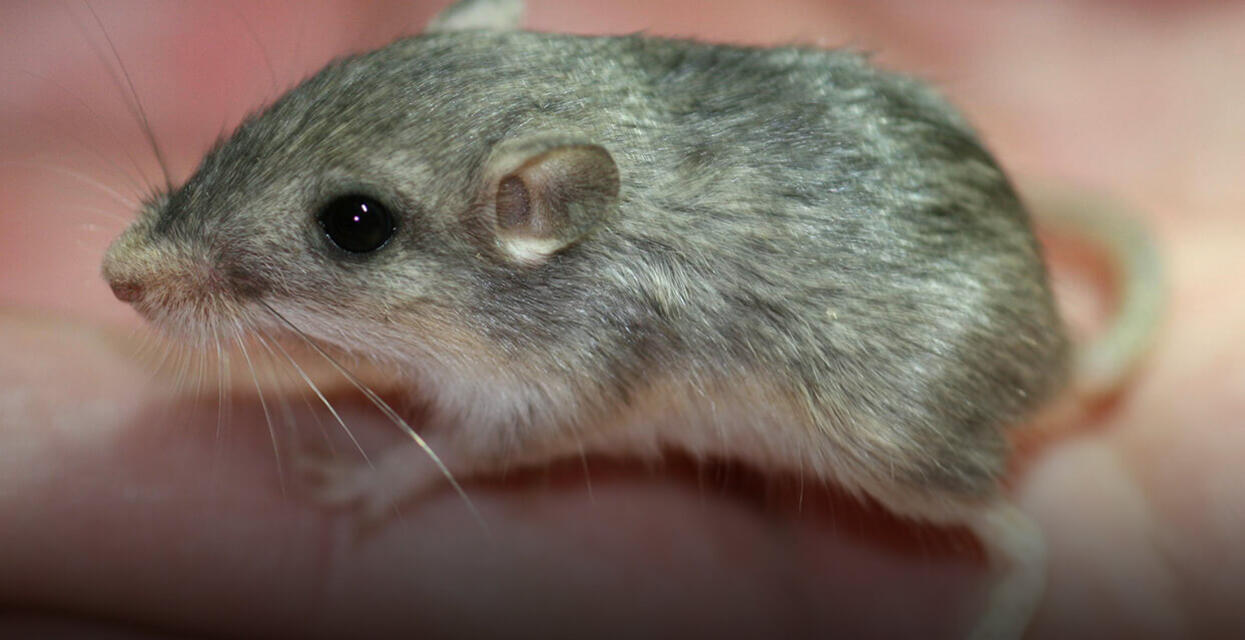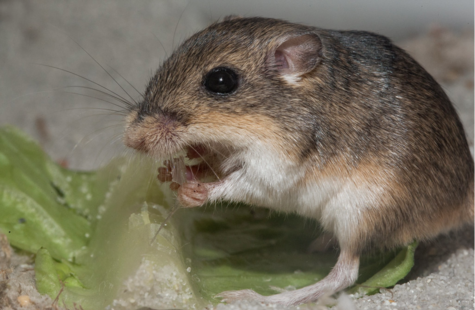Conservation Status: US Fish and Wildlife Service - Endangered
Threats to Survival: Habitat loss and fragmentation
A Brush with Extinction
Pacific pocket mice used to be found from Los Angeles all the way to the Mexican border at the southern edge of San Diego County. For 20 years, they were actually thought to be extinct until a tiny remnant population was rediscovered in 1993 at Dana Point headlands. Unfortunately, due to habitat loss there are only three small populations remaining, one on Dana Point and two in military training areas on Marine Corps Base Camp Pendleton.
Conservation Breeding
Given the small number of Pacific pocket mice remaining in the wild, a translocation program to populate areas of former habitat was deemed to be too risky. Instead, we established the Pocket Mouse Conservation Breeding Facility at the San Diego Zoo Safari Park in 2012. Here, our Recovery Ecology and Conservation Genetics researchers are studying pocket mouse behavior, ecology, stress, and genetic variation to ensure that we successfully produce the most fit offspring for release and learn as much as we can about them along the way. So far, we have more than doubled the number of mice at the facility with successful breeding of founder individuals and their offspring.
Behavior Training
We need to ensure that offspring born at the facility will be able to fend for themselves when, together with our partners, we eventually release them back into the wild. It is important that they have species-appropriate behaviors in order to successfully avoid predators and forage for the right types of food. When we brought the first founder Pacific pocket mice into the facility, we measured these behaviors in order to generate a baseline for normal behavior. Before we release offspring born at the facility to repopulate reserves in the wild, we will conduct similar behavioral assessments. If the mice do not display appropriate behavior, we will give them the necessary experience to select the right types of foods and identify and escape predators in a safe environment.












